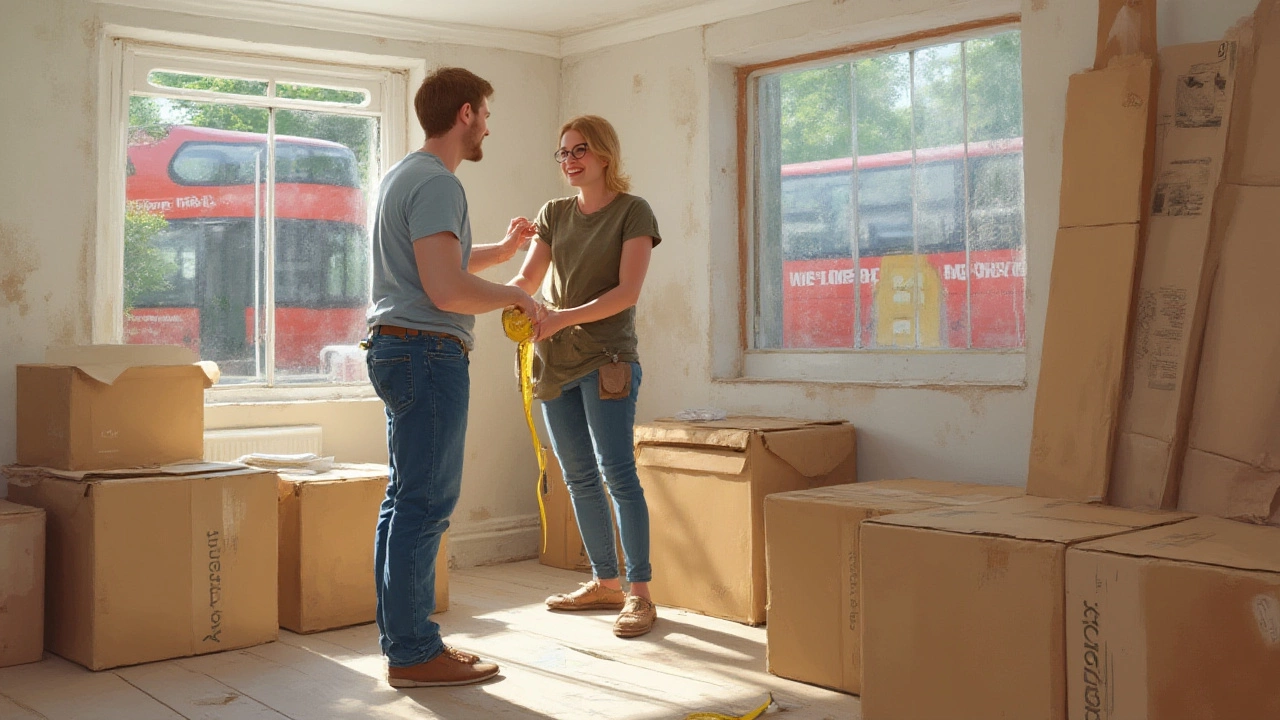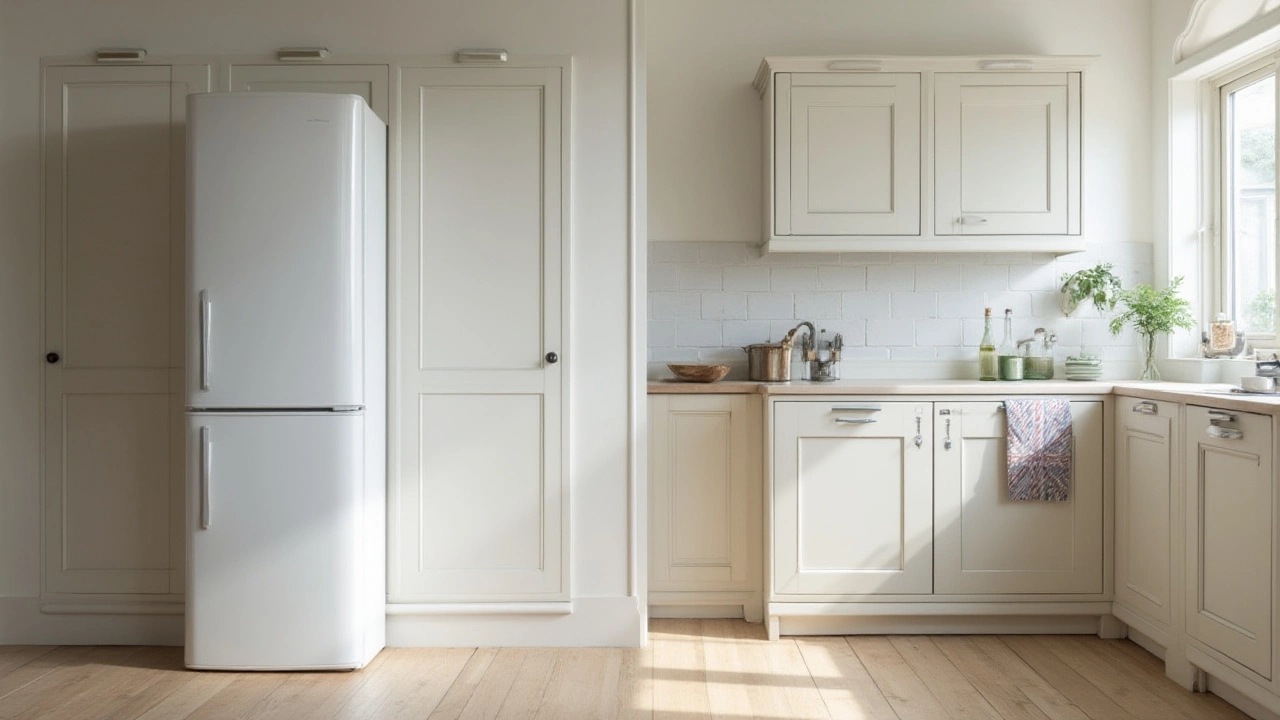It’s wild how a small kitchen renovation decision can drive everyone up the wall. You're picturing your dream kitchen and suddenly the question hits: should you buy your fridge, stove, and dishwasher before or after you commit to new cabinets? One misstep can turn your renovation into a headache. There's a ton of advice floating around, but most people don’t realize how much this choice impacts both your wallet and your sanity.
How Appliances and Cabinets Actually Work Together
Let’s start with one fact: appliances are not all created equal when it comes to size and design. Even if you think all 30-inch stoves are identical, try sliding one into custom cabinets and tell me how it goes. In my years talking to kitchen designers here in Vancouver, the stories I hear are equal parts hilarious and horrifying—folks end up with an inch-wide gap next to the fridge, or a dishwasher that can’t open because the handle smacks into the cabinet door. Yikes.
There’s another detail nobody really mentions until you’re knee-deep in decisions: appliance makers regularly update dimensions, handle shapes, vent clearances, and control panel placements. So the measurements on that pretty Samsung range you saw last month? Could be off by half an inch next season. And in home design, half an inch can feel huge.
If you design your cabinetry before knowing exactly which models of appliances you’ll buy, your kitchen could become a jigsaw puzzle that’s missing a piece. Even with a "standard" cabinet width, depths and heights shift to suit the specific fridge, stove, or microwave you pick. Take counter-depth fridges, for example. These are popular here since most Vancouver kitchens are tight on space. But some models stick out—sometimes by two or three inches—past your sleek new cabinets. It’s annoying and can make the kitchen feel cluttered.
On the other hand, waiting until after your cabinets are in to start appliance shopping? You leave yourself boxed in—literally. Imagine trying to find a dishwasher that fits perfectly within a 24 and 1/8 inch opening. Or searching for a built-in oven that doesn’t stick out or get lost in a sea of cabinetry. Suddenly, your dream kitchen becomes a compromise. No one wants to be forced into buying a sub-par oven just because it’s the only thing that fits.
Here’s a slightly wild stat: in Canada, nearly 40% of kitchen renovation do-overs are triggered by appliance fit issues, according to a 2023 study from the Canadian Home Builders’ Association. It’s not a minor detail—and it costs time, money, and patience. You don’t want to be one of those folks. Cabinets are a long-term commitment, but appliances usually stay for 7-10 years on average, according to Consumer Reports. So you need the right marriage between them from the start.
When planning this epic kitchen revamp, it’s not just about shiny surfaces. You need to think about the way everything fits—both physically and functionally. Sometimes that means making a few decisions a lot earlier than you expected.

What Happens When You Buy Appliances Before Cabinets?
This might sound like a bold move, but securing your appliances before finalizing your cabinet design is hands-down the safest bet for most people. When you pick appliances first, your cabinet maker (or supplier, or even the big box store kitchen designer, if you’re keeping it simple) gets exact specs, not just a hopeful guess. That’s not just the main dimensions—it’s also details like hinge swing, plug location, gas or water line placement, and even where the ventilation is going to run.
Having appliance specs at hand lets your cabinet team design seamless custom panels, accommodate built-in models, or allow for special installations—like those trendy under-counter microwaves, which are surprisingly fussy about fit. This step also gives you a chance to check power, water, and vent locations before anyone starts cutting into walls or putting down tile. Small details save big headaches later on.
A common mistake people make is putting off appliance orders, thinking "I’ll pick them when the sales roll around." But the reality is, popular models sometimes sell out for months (especially after supply chain hiccups—anyone else remember trying to get a fridge during the pandemic?). If you wait, you might eat up your renovation timeline, or worse, get stuck with a model that throws all your careful planning off-kilter.
Appliance-first planning also snaps your budget into focus. You’ll know if springing for a pro-style stove leaves you enough for that waterfall-edge quartz countertop. Or if you need to dial it back a notch and still end up with a sweet-looking kitchen that actually works.
Here are a few hyper-specific tips that will save you headaches:
- Bring appliance spec sheets to EVERY meeting with your cabinet designer—not just your best guess on sizes.
- Double-check that fridge door swings won’t block the pantry or adjacent drawers (a classic Vancouver condo mistake).
- Look for appliances you can actually touch and measure at the showroom—nothing beats seeing the exact model before you order it.
- If you’re adding built-in appliances—like a drawer microwave—get the install guide before the cabinets are even sketched out.
- Don’t ignore appliances you can’t see, like under-sink water filters, when planning cabinet space.

What If You Need to Buy Cabinets First? Tips and Traps
Sometimes you have to start with cabinets—maybe you found an unbelievable deal that won’t last, or your project timeline forces your hand. When that's the case, you need to go old-school: meticulous planning and zero assumptions. Don’t just rely on "standard" openings. Those standards change way more than people realize.
Always add a bit of wiggle room where you can. If your dream fridge says it's 36" wide, make the cabinet opening at least 36.25", maybe even 36.5" if possible. Manufacturers change specs more often than weather in Vancouver. Also—check if any nearby drawers, countertop edges, or walls might block appliance doors from opening fully. It sounds ridiculously obvious, but I've seen half a dozen kitchens where you can't pull the crisper drawer out because the wall's in the way.
A sneaky little pro tip: order filler strips alongside your cabinets. These are narrow bits of matching material that can be installed last minute, letting you tweak the space for slightly larger (or more crooked) appliances than planned. They're cheap insurance against a painful mistake.
Measure, then measure again. And don’t trust online specs without confirming with the actual item or a reliable showroom rep. If you’re working with a custom cabinet maker, ask for flexibility—sometimes they can leave a space unfinished and come back once you confirm your final appliance pick. It’s not the norm, but in some busy markets (yup, looking at you, Vancouver), you can negotiate oddball schedules when everyone's swamped.
Another tip: prioritize cabinet adjustability. Some base cabinets can be shimmed or have removable side panels, letting you squeeze in an appliance that's a hair bigger than expected. Not all designs allow it, but if you can find this, grab the option.
Here are common traps to dodge:
- Never design upper cabinets too close above the range—modern stoves often sit higher or have odd-shaped back control panels.
- Watch the depth of cabinets flanking the fridge. If they're too deep, the doors won't open past 90 degrees, and you can't pull shelves out for cleaning.
- Dishwashers love to surprise people—measure the full length needed to open the door, since those handles add an inch or more.
- Be suspicious of "energy efficiency" models—they tend to use funky hinges or vents that gobble up extra space behind or above the unit.
- Microwave drawers sound clever until you realize you can’t fit your largest bowl, thanks to misleading clearance numbers.
If you do have to go cabinets-first, get written confirmation from your supplier that they'll take back face panels if something doesn’t fit. In 2024 alone, warranty returns for misfit panels jumped 12% in BC—kitchen stores are getting stricter about what's "your fault" and what isn't.

